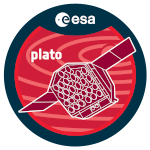A spectroscopic characterization is available for less than 30% of the bright stars in the Solar neighborhood. This missing information about the Galactic environment in this region of space is very important for asteroseismic and planetary studies and space missions (e.g., ESA PLATO or NASA TESS) that are designed to perform an in-depth analysis of large fields of the sky-sphere and searching for exoplanets around bright stars.
Accurate atmospheric parameters and chemical composition of stars play a vital role in characterizing physical parameters of exoplanetary systems and understanding their formation. A full asteroseismic characterization of a star is also possible if its main atmospheric parameters are known.
In this contribution, we discuss the effort of ground-based spectroscopic observations made by average-sized telescopes and compare them with ongoing and planned all-sky spectroscopic surveys. As an example, we will present the ongoing spectroscopic survey SPFOT that employs Vilnius University Echelle Spectrograph (VUES) mounted on the 1.65 m telescope of the Molėtai Astronomical Observatory in Lithuania. Using the high-resolution (up to R=68000) and long wavelength coverage (400 - 900 nm) VUES spectra we are able to provide the detailed spectroscopic characterization for bright stars. We have already observed about 2000 brightest stars in fields covering the PLATO LOPN and TESS continuous viewing zone. Most of LOPN P2 targets are already observed. Results for a part of the sample were already published in a number of contributions where we presented detailed atmospheric parameters and abundances of up to 34 chemical elements.
|
|
|
Abstracts > sorted by Authors > Tautvaišienė GražinaGround-based contribution of average-sized telescopes to characterisation of PLATO targets
1 : Institute of Theoretical Physics and Astronomy, Vilnius University
|

 PDF version
PDF version
